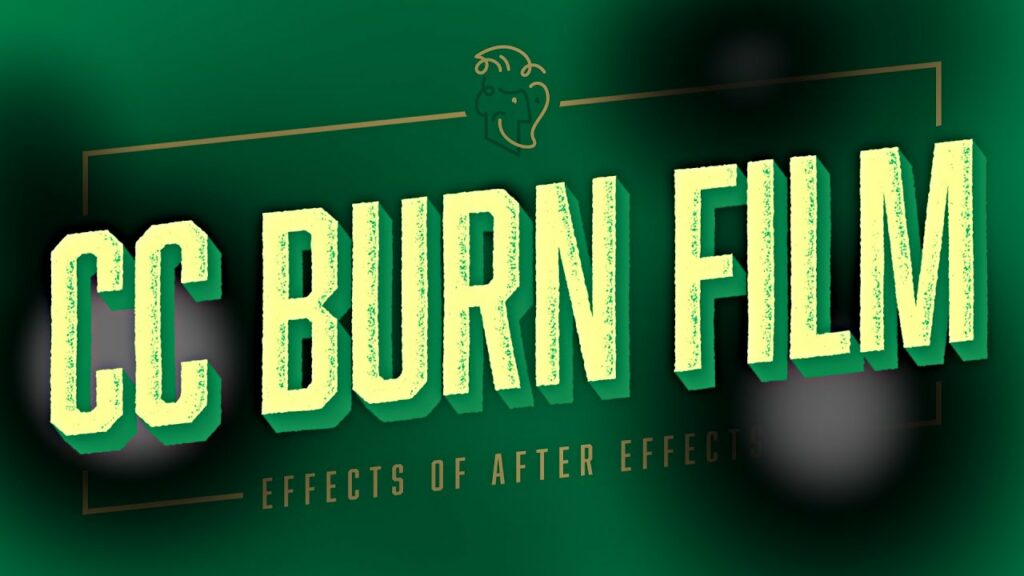Mastering the CC Burn Film Effect in Adobe After Effects: A Comprehensive Tutorial

Introduction: The CC Burn Film effect in Adobe After Effects is a powerful tool that allows users to create stunning vintage and distressed looks reminiscent of old film stock. Whether you’re aiming to add visual interest to your videos, evoke a sense of nostalgia, or simply enhance the aesthetic appeal of your footage, mastering the CC Burn Film effect can elevate your projects to the next level. In this comprehensive tutorial, we’ll explore the intricacies of the CC Burn Film effect, covering everything from its basic usage to advanced techniques, ensuring that you can harness its full creative potential with confidence and efficiency.
Understanding the CC Burn Film Effect: The CC Burn Film effect is part of the Cycore Effects suite included with Adobe After Effects. It simulates the appearance of burning or overexposed film by applying a combination of color distortion, grain, and light leaks to the footage. The effect can be customized to achieve various looks, ranging from subtle vintage effects to dramatic visual distortions.
Basic Usage: To apply the CC Burn Film effect to your footage in Adobe After Effects, follow these steps:
- Import Footage: Start by importing the footage you wish to apply the effect to into your After Effects project.
- Create a New Composition: Drag your footage into the composition timeline to create a new composition.
- Apply the CC Burn Film Effect: In the Effects & Presets panel, search for “CC Burn Film” and drag the effect onto your footage layer.
- Adjust Settings: With the footage layer selected, navigate to the Effect Controls panel to adjust the settings of the CC Burn Film effect. Experiment with parameters such as Burn Color, Burn Softness, Burn Exposure, and Burn Region to achieve your desired look.
- Preview and Fine-Tune: Play back your composition to preview the effect in real-time. Make any necessary adjustments to the effect settings to fine-tune the appearance of the burn film effect.
- Render and Export: Once you’re satisfied with the result, render your composition and export the final video file for distribution or further editing.
Advanced Techniques: While the basic usage of the CC Burn Film effect can yield impressive results, exploring advanced techniques can further enhance its creative potential. Here are some advanced techniques to consider:
- Layering Effects: Combine the CC Burn Film effect with other effects in After Effects to create more complex and dynamic looks. Experiment with effects such as Grain, Glow, and Color Correction to achieve unique visual effects.
- Keyframing: Utilize keyframes to animate the parameters of the CC Burn Film effect over time. This allows you to create dynamic transitions and effects that evolve throughout the duration of your footage.
- Masking and Blending Modes: Use masks and blending modes to apply the CC Burn Film effect selectively to specific areas of your footage. This allows for greater control over the placement and intensity of the effect, resulting in more nuanced and visually appealing results.
- Custom Presets: Save custom presets of the CC Burn Film effect with different settings and variations for future use. This streamlines your workflow and allows you to apply consistent looks across multiple projects.
- Texture Overlays: Add texture overlays, such as film grain or dust particles, to further enhance the vintage aesthetic of the CC Burn Film effect. Experiment with blending modes and opacity settings to achieve subtle or dramatic effects.
Practical Applications: The CC Burn Film effect can be used in a variety of creative projects to add visual interest and evoke a specific mood or atmosphere. Here are some practical applications of the CC Burn Film effect:
- Vintage Video: Give your footage a nostalgic, retro look reminiscent of old film stock by applying the CC Burn Film effect with warm, sepia-toned colors and subtle grain.
- Horror or Thriller Films: Create eerie or unsettling visuals for horror or thriller films by intensifying the burn effect and adding ominous lighting and distortion.
- Music Videos: Enhance the visual storytelling of music videos by incorporating the CC Burn Film effect to convey emotion and atmosphere. Experiment with different settings to match the mood of the music.
- Title Sequences: Use the CC Burn Film effect to add visual flair to title sequences and motion graphics, giving them a gritty, cinematic quality.
- Experimental Films: Explore experimental or avant-garde filmmaking techniques by pushing the boundaries of the CC Burn Film effect and incorporating it into abstract or surreal visual compositions.
Conclusion: The CC Burn Film effect in Adobe After Effects offers a versatile and powerful tool for enhancing the visual appeal of your videos and evoking a range of emotions and atmospheres. By mastering the basic usage, exploring advanced techniques, and applying the effect creatively in your projects, you can elevate your filmmaking and motion graphics to new heights. Whether you’re aiming for a vintage aesthetic, creating atmospheric effects, or experimenting with visual storytelling, the CC Burn Film effect provides endless possibilities for creative expression. So, dive in, experiment, and unleash your creativity with the CC Burn Film effect in Adobe After Effects.




